Planning a wildlife outdoor adventure is an exciting and fulfilling experience for nature enthusiasts and adventure seekers. Such an adventure offers the opportunity to explore and appreciate the beauty of wildlife in their natural habitats.
Whether you are a wildlife photographer, birdwatcher, or simply someone who appreciates nature’s wonders, planning is key to ensuring a successful and enjoyable experience.
Choosing a destination is the first step in planning your wildlife outdoor adventure. Factors to consider include the variety of wildlife species, the accessibility of the location, and the level of conservation efforts in place.
Researching the wildlife and their habitats is essential in order to identify the species you are interested in observing and understanding their behavior and habitat requirements.
Preparing for a wildlife adventure involves gathering the necessary gear and equipment. This may include binoculars, cameras, field guides, and appropriate clothing for varying weather conditions.
Packing efficiently and effectively is crucial to ensure you have everything you need while keeping your luggage manageable.
Timing is also a crucial factor to consider when planning a wildlife outdoor adventure. Research the best time of year for wildlife sightings and factor in weather conditions that may affect your experience.
Booking accommodations and transportation in advance is important to secure your travel arrangements and ensure a comfortable and hassle-free trip.
Deciding between a guided or self-guided wildlife adventure is another consideration. Guided adventures offer the expertise of local guides and the convenience of an organized itinerary, while self-guided adventures allow for more flexibility and independence.
Responsible wildlife viewing and conservation should be at the forefront of your planning process. Familiarize yourself with codes of conduct for wildlife viewing and practice ethical behavior to minimize the impact on the environment and the wildlife.
Following conservation guidelines can contribute to the preservation of the habitats and the species you encounter.
Finally, enjoy and document your wildlife outdoor adventure to create lasting memories. Take advantage of wildlife viewing tips and employ photography techniques to capture the beauty and essence of the wildlife you encounter.
By following these planning steps and guidelines, you can ensure a memorable and fulfilling wildlife outdoor adventure that allows you to connect with nature and appreciate the wonders of wildlife conservation.
Why Plan a Wildlife Outdoor Adventure?

Planning a wildlife outdoor adventure is essential to make the most of your experience and ensure a successful trip. Exploring the wilderness allows you to connect with nature, learn about different species, and appreciate the beauty of the natural world.
It also provides opportunities for adventure and personal growth.
1. Encounter unique wildlife: Planning a wildlife outdoor adventure gives you the chance to see animals in their natural habitats. Whether it’s spotting rare birds, observing elusive predators, or marveling at marine life, these encounters will create unforgettable memories.
2. Learn about conservation: Wildlife adventures offer opportunities to learn about conservation efforts and the importance of preserving our natural environments. By witnessing wildlife firsthand, you develop a deeper understanding of their habitats and the challenges they face.
3. Connect with nature: Being immersed in nature has numerous benefits for our well-being. It can reduce stress, improve mood, and promote physical fitness. Connecting with the natural world allows us to appreciate its beauty and understand our place within it.
4. Gain new knowledge: Wildlife adventures provide a unique educational experience. You can learn about different species, their behaviors, and their roles in the ecosystem. This knowledge fosters a greater appreciation for the interconnectedness of all living beings.
5. Foster a sense of adventure: Exploring the wilderness can ignite a sense of adventure and excitement. From hiking through rugged landscapes to embarking on safari expeditions, these adventures challenge and inspire us to step out of our comfort zone.
Planning a wildlife outdoor adventure allows you to delve into the wonders of nature, gain knowledge, and create lifelong memories. So, why not embark on this thrilling journey and experience the magic of the wild firsthand?
Choosing a Destination for a Wildlife Outdoor Adventure
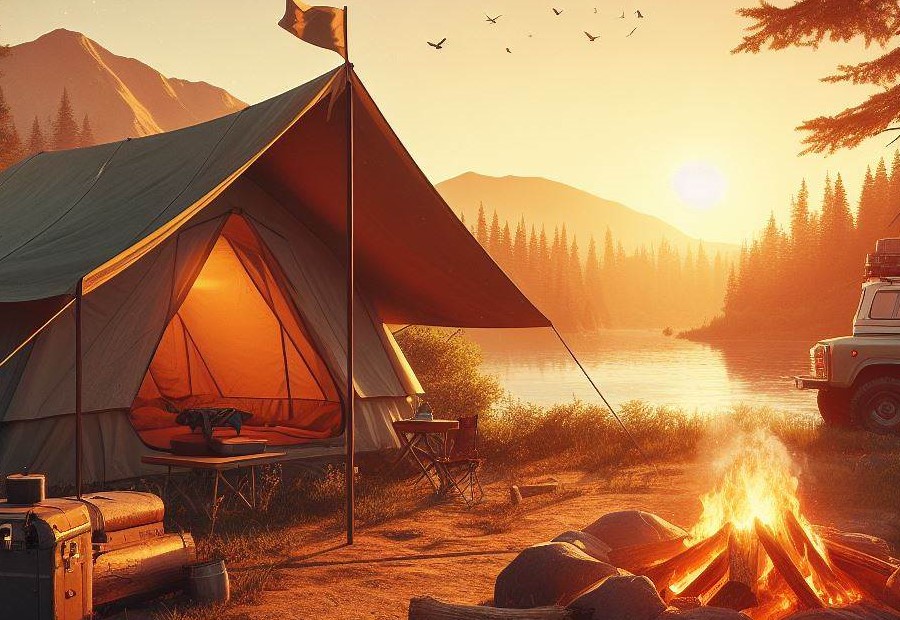
Looking to embark on a thrilling wildlife outdoor adventure? In this section, we’ll dive into the key factors to consider when choosing your destination.
From the mesmerizing diversity of fauna and flora to the breathtaking landscapes, we’ll uncover how each factor contributes to creating an unforgettable experience in the wild.
So, let’s explore how to select the perfect destination for your next wildlife escapade and ensure you make the most out of your adventure.
Factors to Consider when Choosing a Destination
When choosing a wildlife outdoor adventure destination, it is important to consider several factors:
- Location: The location of the destination plays a crucial role in determining the type of wildlife species you may encounter. It is essential to consider different regions that have diverse ecosystems and habitats supporting unique flora and fauna.
- Accessibility: It is necessary to consider how easily accessible the destination is. Check for transportation options and any necessary permits or entry fees required.
- Wildlife Diversity: Research the biodiversity of the area. Look for destinations that offer a wide range of wildlife species that align with your interests and preferences.
- Seasonality: Consider the timing of your trip. Certain wildlife species may be more active or visible during specific seasons. Plan your visit accordingly to maximize your chances of wildlife sightings.
- Local Guides and Experts: Find out if there are local guides or experts available in the area. They can provide valuable knowledge and enhance your wildlife experience by helping you navigate the area and spotting wildlife.
- Infrastructure and Accommodation: Check if the destination offers suitable accommodations, such as lodges or campsites, for your stay. Additionally, assess the availability of basic amenities and facilities that can contribute to a comfortable experience.
- Conservation Efforts: Consider destinations that prioritize wildlife conservation. Choose places that have initiatives in place to protect and preserve the natural habitat and wildlife populations.
Identifying Wildlife Species
When embarking on a wildlife outdoor adventure, it is important to be able to identify the various species of wildlife you may encounter. Here are some key points to consider:
- Research: Conduct thorough research on the wildlife species that are native to the region you will be visiting.
- Field Guides: Carry field guides specific to the region and the types of wildlife you are likely to encounter.
- Vocalizations: Learn to identify the vocalizations or calls of different species, as they can help in locating and identifying wildlife.
- Physical Characteristics: Pay attention to physical characteristics such as size, shape, color, markings, and patterns to differentiate between different species.
- Behavior: Understanding the behavior of different species can also aid in identification. Observe their feeding habits, movement patterns, and social interactions.
- Expert Advice: Seek guidance from local naturalists, park rangers, or experienced wildlife enthusiasts who can provide valuable insights and help with identification.
- Photography and Documentation: Capture clear images of the wildlife you encounter, including close-ups of distinctive features, to aid in identification later on.
By familiarizing yourself with the characteristics and behavior of wildlife species, you can enhance your wildlife experience and contribute to the conservation efforts.
Understanding Their Habitat and Behavior
Understanding the habitat and behavior of wildlife is crucial when planning a wildlife outdoor adventure. By understanding their natural environment and behaviors, you can increase your chances of observing and experiencing wildlife in their natural habitat.
To comprehend their habitat, research the specific ecosystems where the wildlife you are interested in can be found. This could include forests, grasslands, wetlands, or mountains. Learn about the typical vegetation, water sources, and climate conditions of these habitats.
Additionally, it is important to understand the behavior of the wildlife you are hoping to encounter. This includes their movement patterns, feeding habits, and social structures.
By understanding their behavior, you can anticipate their actions and position yourself in the best locations for wildlife viewing.
For example, if you are interested in observing migratory birds, research their migration routes and timing. This will allow you to plan your adventure during the peak migration season and be in the right place at the right time.
Remember that wildlife behavior can be influenced by various factors such as weather conditions, time of day, and season. Stay informed about any changes or specific considerations for the wildlife you are interested in observing.
Developing a good understanding of the habitat and behavior of wildlife will enhance your nature experience and provide you with more opportunities to appreciate and document the incredible diversity of our natural world.
Preparing for a Wildlife Outdoor Adventure
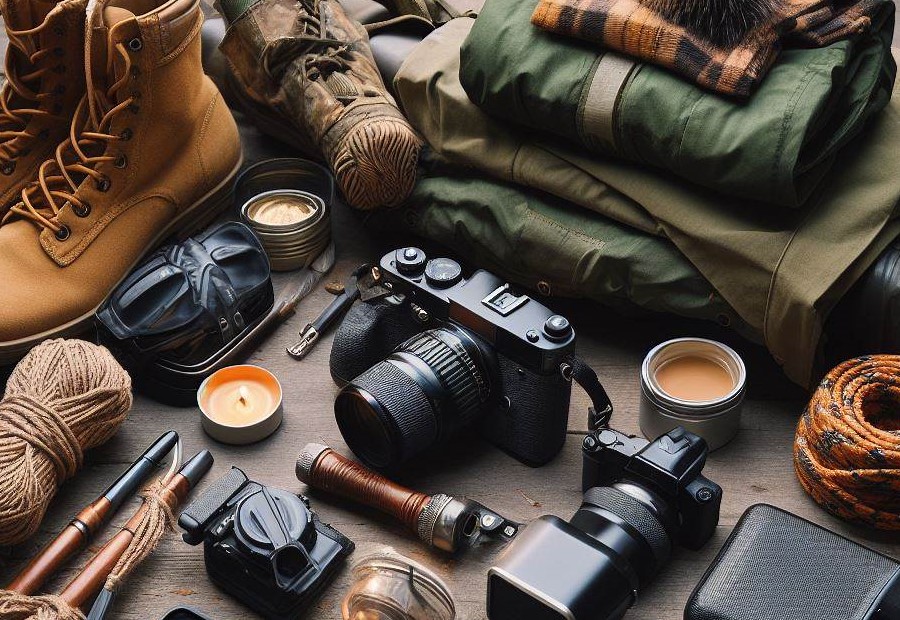
Out for a wildlife outdoor adventure? Before you embark on this exciting journey, let’s prepare ourselves. We’ll explore essential gear and equipment, ensuring we have everything we need for a smooth experience.
Plus, I’ll share some valuable packing tips and guidelines to make your outdoor adventure truly unforgettable. So, grab your backpack and get ready to immerse yourself in the wonders of nature!
Essential Gear and Equipment
When planning a wildlife outdoor adventure, it is crucial to have the essential gear and equipment to ensure a successful and enjoyable experience.
- A sturdy backpack: A durable and spacious backpack is essential for carrying all your gear and equipment during your wildlife adventure.
- Comfortable and weather-appropriate clothing: Dressing in layers and wearing clothing suitable for the weather conditions will provide comfort and protection during your outdoor excursion.
- Sturdy hiking boots: Invest in a good pair of hiking boots that provide ankle support and traction for walking on different terrains.
- Binoculars: A pair of binoculars will allow you to observe wildlife from a distance and get a closer look at their behavior without disturbing them.
- Field guide for wildlife identification book: Carry a field guide or a book that helps you identify different wildlife species and learn more about their habitats and behaviors.
- Camera: Capture the unforgettable moments of your wildlife adventure with a camera, whether it’s a DSLR or a high-quality smartphone camera.
- Water bottle and hydration pack: Stay hydrated throughout your adventure by carrying a reusable water bottle or a hydration pack.
- Sunscreen and insect repellent: Protect your skin from the sun’s harmful rays and keep bugs at bay with sunscreen and insect repellent.
- First aid kit: Accidents can happen, so it’s important to have a well-stocked first aid kit to handle any minor injuries or medical emergencies.
- Maps and navigation tools: Bring along detailed maps, a compass, or a GPS device to help navigate through unfamiliar terrains and ensure you stay on the right track.
Having the essential gear and equipment will not only enhance your safety but also contribute to an immersive and memorable wildlife outdoor adventure.
Packing Tips and Guidelines
When preparing for a wildlife outdoor adventure, it is essential to pack wisely and follow these packing tips and guidelines:
- Make a packing list to ensure you don’t forget any important items.
- Consider the climate and weather conditions of your destination. Pack appropriate clothing and footwear.
- Opt for lightweight, moisture-wicking, and quick-drying clothing for comfort during outdoor activities.
- Bring layers to adapt to temperature changes throughout the day.
- Pack sturdy and comfortable hiking boots or shoes to protect your feet and provide stability on uneven terrain.
- Don’t forget to bring a hat, sunglasses, and sunscreen to protect yourself from the sun.
- Carry a waterproof backpack or bag to protect your belongings from rain or water splashes.
- Bring a reusable water bottle to stay hydrated during your outdoor adventure.
- Don’t forget insect repellent to ward off mosquitoes and other bugs.
- Pack a first aid kit with essential items like bandages, antiseptic wipes, and any necessary personal medications.
- Bring a compact and lightweight camera to capture memorable moments and wildlife sightings.
- Carry binoculars for better wildlife observation and identification.
- Always follow local regulations and guidelines regarding wildlife protection and conservation.
By following these packing tips and guidelines, you can ensure that you are well-prepared and equipped for an enjoyable and successful wildlife outdoor adventure.
Choosing the Right Time for a Wildlife Outdoor Adventure
Choosing the right time for a wildlife outdoor adventure is crucial to maximize your chances of spotting animals in their natural habitat.
The best time for a wildlife adventure depends on several factors, including the specific location, climate, and the behavior patterns of the wildlife you wish to observe.
1. Weather conditions: When planning your trip, it is essential to research the weather patterns of the destination you plan to visit. Wildlife is often more active during specific seasons when conditions are favorable.
2. Breeding seasons: Many wildlife species have distinct breeding seasons when they are more active and visible. It is important to research the breeding seasons of the animals you want to see to increase your chances of encountering them.
3. Migration patterns: If you are interested in seeing migratory species, it is advisable to time your trip to coincide with their migration periods. This will provide you with a unique opportunity to witness large groups of animals on their journey.
4. Time of day: Animals are often most active during the early morning and late afternoon when temperatures are cooler. It is recommended to plan your activities around these times for the best wildlife viewing experience.
Booking Accommodations and Transportation
Whether you’re planning a thrilling wildlife outdoor adventure or simply longing for a peaceful retreat in nature, booking the right accommodations and transportation is key.
In this section, we’ll uncover the diverse types of accommodations available for nature enthusiasts, ensuring you find the perfect fit for your needs.
Additionally, we’ll explore various transportation options, allowing you to navigate your way through breathtaking landscapes effortlessly. So, buckle up and get ready to embark on an unforgettable journey into the wild!
Types of Accommodations
When planning a wildlife outdoor adventure, it’s important to consider the different types of accommodations available. Here are some options to choose from:
- Camping: For a more immersive experience, you can choose to pitch a tent and camp in designated areas within or near wildlife habitats. Camping allows you to be close to nature and experience the sounds and sights of the wilderness.
- Lodges: Many wildlife reserves and national parks offer lodges or cabins for visitors. These accommodations provide comfort while still being surrounded by nature. Lodges often have amenities such as private bathrooms, comfortable beds, and dining facilities.
- Resorts: Some wildlife destinations have luxury resorts that offer a range of facilities and services. Resorts provide a higher level of comfort and amenities, including swimming pools, spa treatments, and fine dining options.
- Eco-lodges: For those seeking sustainable and environmentally-friendly options, eco-lodges are a great choice. These accommodations are designed to minimize their impact on the environment and often support local conservation efforts.
- Tented camps: Tented camps provide a blend of camping and luxury. These temporary camps are set up in wildlife areas and offer comfortable beds, private bathrooms, and dining facilities.
While choosing the type of accommodation, consider factors such as your budget, desired level of comfort, and the location’s proximity to wildlife habitats.
Transportation Options
When planning a wildlife outdoor adventure, it is important to carefully consider transportation options.
The choice of transportation is crucial as it can greatly enhance your experience and enable you to access remote wildlife habitats. Here are some options to consider:
- 4×4 vehicles: Opting for a 4×4 vehicle can grant you access to rugged terrains and off-road areas where wildlife may be more abundant. Their versatility allows for extensive exploration and the ability to reach remote locations.
- Boats: If your wildlife adventure involves water habitats or coastal areas, using boats can be an excellent transportation option. Boats provide access to islands, wetlands, and marine environments where you can observe unique wildlife species.
- Guided tours: Joining guided tours or hiring local guides can be a convenient transportation option. Guides are familiar with the area and can provide transportation in specialized vehicles such as safari trucks or boats, ensuring a comfortable and well-organized experience.
- Hiking or walking: For wildlife adventures in areas with well-established trails or protected areas, hiking or walking can be a sustainable and immersive transportation option. It allows for a closer connection with nature and the opportunity to observe wildlife at a slower pace.
- Public transportation: In some wildlife destinations, public transportation might be available and cost-effective. Buses or trains can provide access to national parks, nature reserves, or wildlife sanctuaries, reducing the environmental impact of your journey.
- Private charter flights: In remote areas with limited access, private charter flights can be an efficient transportation option. They enable you to reach destinations that are not easily accessible by road or other means of transportation.
Guided vs. Self-Guided Wildlife Outdoor Adventures
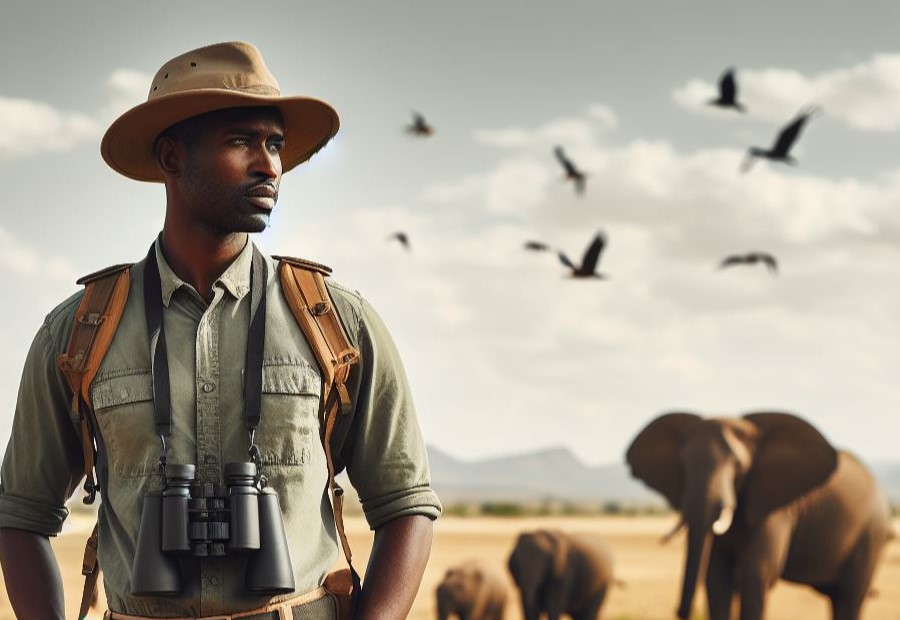
When it comes to planning a wildlife outdoor adventure, one important decision to make is choosing between guided and self-guided experiences. In this section, we’ll explore the benefits of each approach, giving you a glimpse into what awaits on your journey.
Whether you prefer the expertise of a guide or the freedom of exploration, we’ve got you covered. So, let’s dive in and discover the wonders that await in both guided and self-guided wildlife outdoor adventures!
Benefits of Guided Wildlife Outdoor Adventures
Guided wildlife outdoor adventures offer enhanced knowledge, allowing participants to learn from experienced guides who possess extensive knowledge of the local wildlife and habitat.
This provides a deeper understanding of the animals, their behaviors, and their ecological importance.
Safety and Security: With a knowledgeable guide leading the way, participants can feel confident in their safety during the adventure. Guides are trained to assess potential risks, navigate challenging terrain, and ensure the well-being of the group.
Successful Wildlife Sightings: Guides, equipped with insider knowledge, are aware of the best locations and times to spot wildlife. This expertise increases the chances of encountering elusive species and enables participants to capture memorable sightings and photographs.
Access to Restricted Areas: Some wildlife habitats may have restricted access or require permits. Guided adventures often have special arrangements or permits that allow participants to access these areas, providing a unique opportunity to explore remote and less-visited locations.
Environmental Education: Guided adventures frequently incorporate educational components that focus on wildlife conservation and environmental stewardship. Participants can learn about the importance of preserving habitats and minimizing their impact on the environment.
Benefits of Self-Guided Wildlife Outdoor Adventures
The benefits of self-guided wildlife outdoor adventures are numerous and can enhance your overall experience. Here are some key advantages:
- Flexibility: Enjoy the benefits of self-guided wildlife outdoor adventures by having the freedom to set your own itinerary and explore at your own pace. There are no strict schedules or limitations on where you can go.
- Independence: Immerse yourself in nature without relying on a guide through self-guided wildlife outdoor adventures. Take the opportunity to make your own discoveries and connect with the wildlife on a personal level.
- Cost-effectiveness: Experience the cost-effectiveness of self-guided adventures in the wild, which can often be more budget-friendly compared to guided tours. Maintain control over your expenses, such as accommodation and transportation choices.
- Customization: Tailor your adventure to your specific interests and preferences through self-guided wildlife outdoor adventures. Whether you want to focus on birdwatching, hiking, or wildlife photography, enjoy the flexibility to create a trip that suits your goals.
- Privacy: Find privacy and intimacy in your wildlife adventures through self-guided experiences, allowing you to enjoy the wildlife without large groups of people. This solitude can enhance your connection with nature and offer moments of tranquility.
Embarking on a self-guided wildlife outdoor adventure allows you to fully immerse yourself in the natural world, providing a unique and rewarding experience.
Remember to always prioritize safety, respect the wildlife and their habitats, and leave no trace behind. Happy adventuring!
Responsible Wildlife Viewing and Conservation
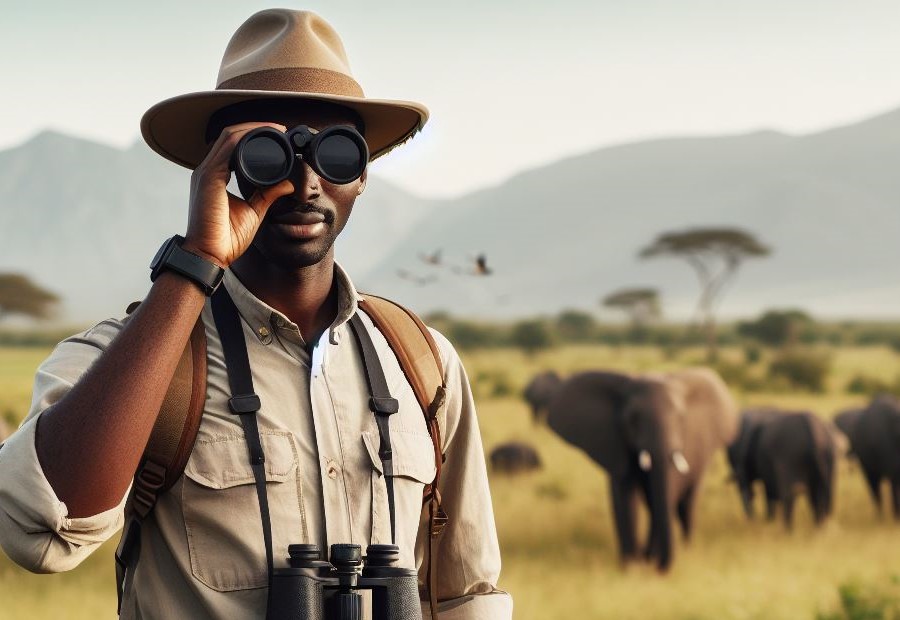
Experience the wonders of responsible wildlife viewing and conservation in this section. Discover the essential codes of conduct and conservation guidelines that ensure the preservation of our precious ecosystems and diverse wildlife.
Learn how these practices not only protect the natural habitats but also contribute to sustainable tourism and the long-term well-being of the animal species.
Prepare to embark on an outdoor adventure that fosters a deep connection with nature while respecting its delicate balance.
Codes of Conduct
Follow the respect wildlife by following strict guidelines when observing them, ensuring that you do not disturb or harm them in any way.
Maintain a safe distance: Keep a safe distance from wildlife, in accordance with the Codes of Conduct, to avoid causing stress or aggression and to allow them to carry out their natural behaviors undisturbed.
No feeding: In accordance with the Codes of Conduct, do not feed wildlife, as it can disrupt their natural diet and behavior, and may even lead to dependency on humans for food.
Do not touch or approach: In accordance with the Codes of Conduct, avoid touching or approaching wildlife, as this can cause stress and may even put you at risk of injury.
Observe quietly: In accordance with the Codes of Conduct, keep noise levels to a minimum and avoid sudden movements that can startle wildlife. This allows for more natural behavior and better opportunities for observation.
Respect boundaries: In accordance with the Codes of Conduct, stay within designated areas and adhere to any restrictions or regulations in place to protect wildlife and their habitats.
Leave no trace: In accordance with the Codes of Conduct, take all your litter with you and avoid leaving any impact on the environment. Be sure to dispose of waste properly to prevent pollution and harm to wildlife.
Educate yourself: Learn about the specific Codes of Conduct for the wildlife and habitat you will be encountering to ensure you are well-informed and prepared.
Report violations: If you witness any violations of the Codes of Conduct or illegal activities, report them to the appropriate authorities to help protect wildlife and their habitats.
Conservation Guidelines
- Adhere to the conservation guidelines in order to respect wildlife habitats and keep a safe distance to avoid disturbing them.
- Minimize disturbance by observing wildlife from a designated area or viewing point.
- It is important not to feed or approach wild animals as it can disrupt their natural behavior and potentially harm them or yourself.
- By staying on designated trails and paths, you can avoid trampling vegetation and disturbing wildlife habitats.
- Ensure proper disposal of trash and leave no trace in order to protect the environment and prevent pollution.
- If you observe any illegal activities or wildlife observations that may require conservation intervention, report them.
- Stay informed about local regulations and guidelines for wildlife conservation and make sure to follow them accordingly.
- Support conservation organizations and initiatives that work towards protecting wildlife and their habitats.
- Spread awareness about the importance of wildlife conservation and the impact of human activities on ecosystems to educate others.
- Always prioritize the well-being and preservation of wildlife and their habitats.
Enjoying and Documenting Your Wildlife Outdoor Adventure
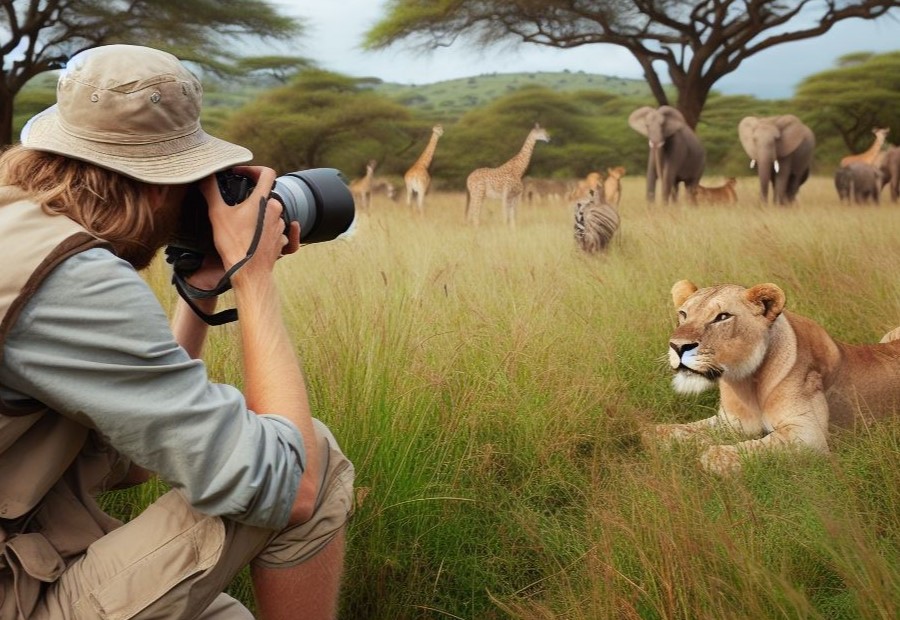
Immerse yourself in the wonders of the wild with our guide to enjoying and documenting your wildlife outdoor adventure.
Tips for wildlife viewing will help you get up close and personal with incredible creatures, while photography and documentation tips will ensure you capture every breathtaking moment.
Soak in the beauty of nature and create lasting memories as you embark on a thrilling journey into the heart of the wilderness. Get ready to explore and preserve the magic of the animal kingdom!
Tips for Wildlife Viewing
When observing wildlife, it is crucial to follow some tips for wildlife viewing to ensure the safety of both you and the animals. One of the key tips is to maintain a safe distance so as not to disturb or endanger them.
By using binoculars or a zoom lens, you can get a closer look without intruding.
Being quiet and patient is another essential tip for wildlife viewing. Loud noises and sudden movements can startle wildlife easily, causing them to flee. To avoid scaring them away, it is important to move slowly and quietly.
Additionally, practicing patience is crucial, as wildlife behavior can be unpredictable.
Respecting the habitat of wildlife is vital to their survival. These creatures rely on their natural habitats, so it is essential to avoid stepping off designated trails and disturbing vegetation or nesting areas.
Leave the environment as you found it, so ensure you do not litter or damage the surroundings.
Prior research and education are key aspects of effective wildlife viewing. Learn about the species you hope to see, including their behaviors, habits, and typical habitats.
Enhance your knowledge by considering the expertise of a knowledgeable guide who can provide valuable insights during your wildlife adventure.
Timing your visits strategically is important when it comes to wildlife viewing. Wildlife tends to be more active during specific times of the day, such as early morning or late afternoon. Research the best times to observe the particular species you are interested in and plan your outings accordingly.
Additionally, different seasons may offer unique opportunities for wildlife viewing, such as migration or mating seasons.
To enhance your wildlife viewing experience, make sure to bring appropriate gear. Essential items include binoculars, a camera with a telephoto lens for capturing memorable moments, and a field guide for species identification.
Dressing appropriately for the weather and wearing comfortable shoes for longer hikes is also crucial.
Lastly, it is important to be aware of and respectful towards other wildlife viewers. If you are sharing a viewing area with fellow enthusiasts, consider their experience as well.
Avoid obstructing their view and maintain a quiet atmosphere to ensure that everyone can enjoy observing the wildlife peacefully.
Photography and Documentation Tips
When it comes to photography and documenting your wildlife outdoor adventure, there are a few photography and documentation tips that can help you capture the best moments and create lasting memories:
- Research beforehand to learn about the wildlife species you’re likely to encounter and their behavior. This will help you anticipate their movements and actions, allowing you to capture more candid shots.
- Invest in a quality camera and lens to ensure clear and detailed photographs. A zoom lens can be especially useful for capturing animals from a distance without disturbing them.
- Make sure to pack extra batteries and memory cards to avoid running out of storage or power at crucial moments. Wildlife encounters can be unpredictable, and you don’t want to miss out on capturing a rare sighting because of technical issues.
- Practice patience and observe quietly. Wildlife photography requires waiting for the perfect moment, so be prepared to spend time observing and waiting for the right opportunities.
- Consider the lighting conditions. Early morning and late afternoon are generally the best times for photography, as the light is softer and creates a more pleasing atmosphere.
- Use a tripod or other stabilizing equipment to ensure steady shots, especially when photographing animals in motion or in low light situations.
Remember, respect for the wildlife and their natural habitat is crucial. Avoid disturbing or approaching animals too closely and follow any conservation guidelines or codes of conduct in place.
By capturing stunning photographs while being mindful of the animals and their environment, you can create a beautiful documentation of your wildlife outdoor adventure.

